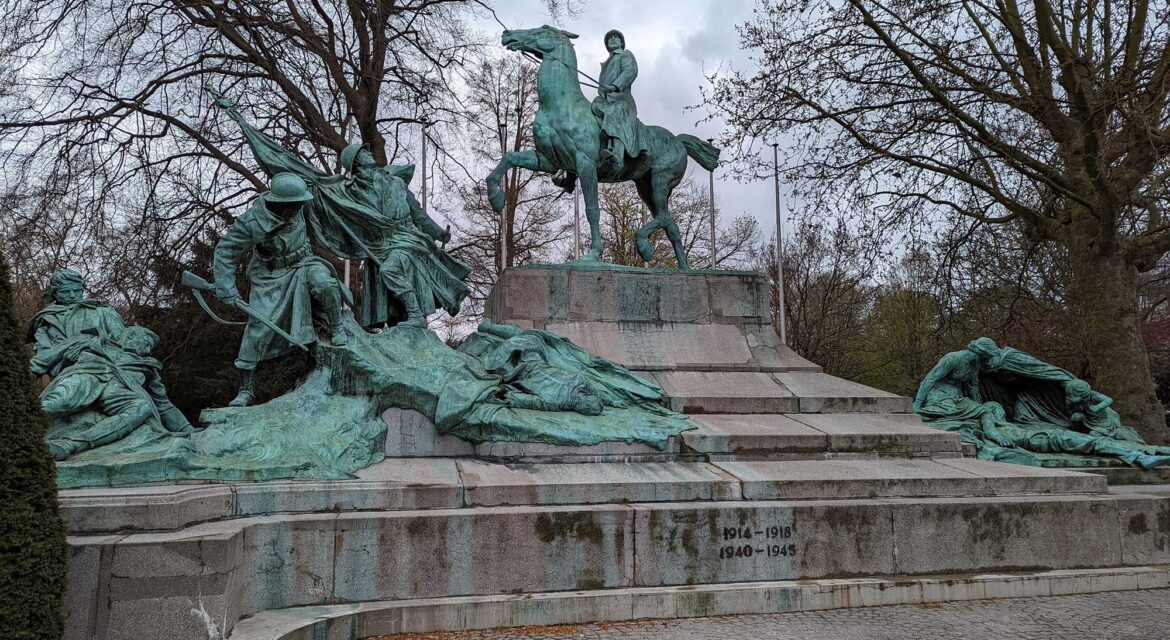 Commemorating the fallen Belgian soldiers of World War I and World War II, the Antwerp War Memorial is a series of memorials that define one corner of Stadspark in Antwerp, Belgium. Built around the Monument to the Fallen, the memorial allows audiences to engage with the sacrifices and efforts of numerous people and nations, highlighting not only what kind of power such landmarks can enable but also how they can evolve.
Commemorating the fallen Belgian soldiers of World War I and World War II, the Antwerp War Memorial is a series of memorials that define one corner of Stadspark in Antwerp, Belgium. Built around the Monument to the Fallen, the memorial allows audiences to engage with the sacrifices and efforts of numerous people and nations, highlighting not only what kind of power such landmarks can enable but also how they can evolve.
A Collection of Memorials
 Organized by the veterans association “Never forget” in 1922, the Monuments to the Fallen shows King Albert I as a rider with two groups of dying soldiers. The sculptures on either side show soldiers that are fighting to defend their country as well as the misery that war represents. Installed in 1930, the Monuments to the Fallen is just one of the features that comprise the current Antwerp War Memorial, as it has evolved to also honor the sacrifices that were made by soldiers during World War II.
Organized by the veterans association “Never forget” in 1922, the Monuments to the Fallen shows King Albert I as a rider with two groups of dying soldiers. The sculptures on either side show soldiers that are fighting to defend their country as well as the misery that war represents. Installed in 1930, the Monuments to the Fallen is just one of the features that comprise the current Antwerp War Memorial, as it has evolved to also honor the sacrifices that were made by soldiers during World War II.
One marker nearby honors Belgian Para-commandos, whose service went from 1942-1992. Another marker is dedicated to the United States Army and all the anti-aircraft artillery units that served in the air defense of the city and port of Antwerp during the German V-1 attacks in 1944 and 1945. Another is dedicated to the Royal Hamilton Light Infantry (RHLI), 2nd Canadian Infantry Division.
What was originally a monument focused on King Albert I and War War I has been transformed into a monumentous complex that honors the sacrifices made in both Worlds Wars. This evolution has created the most identifiable landmark in Stadpark, highlighting the power memorials have to impact audiences and locations in ways that can continue to change and evolve to best connect with audiences.

Belgium in World War I and World War II
 Many memorials define the spaces where they reside but few have expanded and evolved like the Antwerp War Memorial. Doing so highlights what it can mean for a memorial to become more than originally envisioned in order to continue to cultivate engagement from audiences across the eras.
Many memorials define the spaces where they reside but few have expanded and evolved like the Antwerp War Memorial. Doing so highlights what it can mean for a memorial to become more than originally envisioned in order to continue to cultivate engagement from audiences across the eras.


